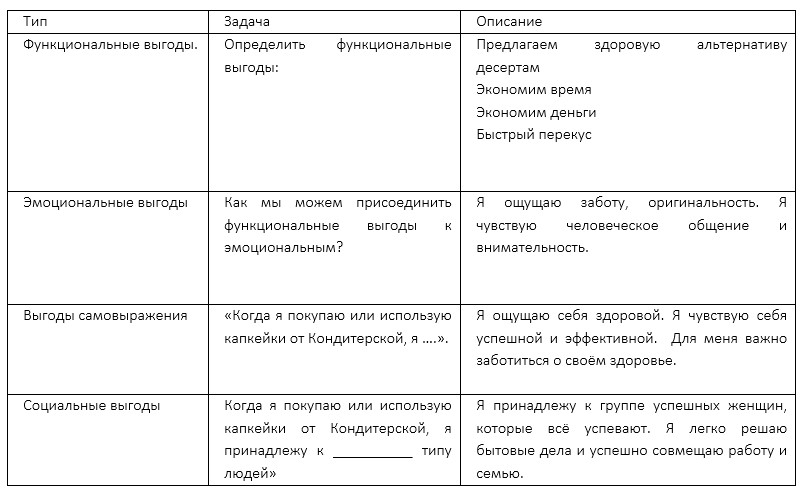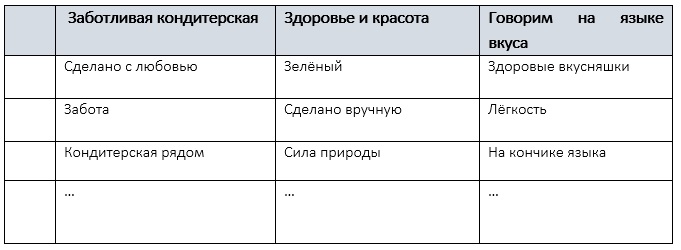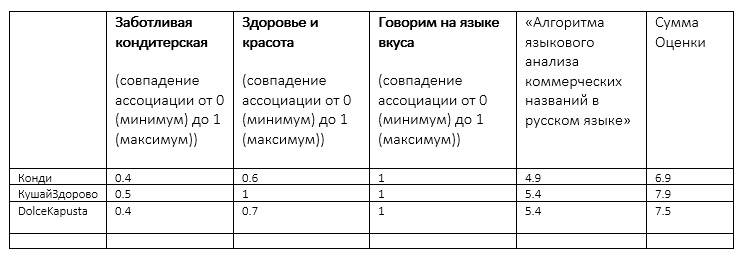Having launched several startups, I have developed a certain brand development algorithm for small companies and startups that is relatively easy to use. This article is the first in a series of "Brand development in a lean startup environment" In it, we will focus on a general description of the brand development approach and on the practical steps for its implementation.
This approach is suitable for both owners of SMEs, start-ups, and novice marketers.
General description of the algorithm
1. Determine (in one sentence) the goal / pain of the target audience that we are solving.
2. Identify the functional, emotional, social and self-expression benefits. Prioritize benefits.
3. Highlight the key message to the target audience.
4. Determine positioning.
5. Generate 30-50 associations with your brand.
6. Group these associations and identify general categories of associations. These will be the main elements (key associations) that your brand will associate with. The given items must be from 2 to 5.
7. Stage of name generation. After completing the previous steps, you have a set of possible brand names at the associative level. Use unsupervised brainstorming to generate as many titles as possible.
8. Weed out the names after brainstorming
8.1 Weed out the names that least of all reflect the essence of the brand
8.2 The remaining names are selected through the additional "Algorithm for the analysis of commercial names in Russian".
8.3 Create a table of correspondence of brand name to key associations.
8.4 We select 5-6 names that have passed the screening stage and have the maximum assessment of compliance with key associations.
9. Checking these 5-6 names on the FIPSA base for the presence of registered trademarks:
www1.fips.ru/iiss/search.xhtml
10. If you are a startup and have not yet determined whether your product is suitable for the market or not, then conduct an additional check of the brand name for semantic stretch / compression if in the future you need to use the brand with a different product line.
11. Choose one name by which the visual identification will be created. This algorithm will be disclosed in the following publications.
Analysis of the steps of the algorithm with an example
The average execution time according to the algorithm for one person is 30 minutes, for a group - 40-50 minutes (the increased time is associated with the coordination of the group, but the result from the group discussion is better in most cases).
Customer example
We are a small confectionery (let's call it Confectionery) that produces cauliflower cupcakes according to an original recipe. We offer a healthy alternative to existing desserts. Our target audience: girls, women who watch their diet, but at the same time love desserts.
We run it according to the algorithm:
1. Determine (in one sentence) the goal / pain of the target audience that we are solving.
With time and budget constraints, our clients are looking for a healthy eating solution.
2. Determine the functional, emotional, social and self-expression benefits.
Table 1. Benefits of the product.

3. Define the key message for the target audience.
We help modern girls and women to take care of their health with the help of healthy desserts.
4. Positioning:
Delicious and healthy desserts for modern women.
5. Generate 30-50 brand associations. Sample list.
Associations can be different, for example: functional benefits, mental images, self-expression benefits, emotional and social benefits, visual associations of shape and color. The main thing is that the associations resonate with the client.
Associations must also provide a tune-away point from competitors that will support the value proposition or achieve parity with the competitor's proposition. It is important to achieve parity in the important metrics by which you are compared to your competitors. Thus, you will not be excluded from consideration during the comparison stage.
Table 2. Example of an association sheet.

6. Group these associations and identify common categories. These categories will be the main elements that your brand will associate with. The given items should be 2-5. Grouping, categorizing and naming a category is the most time consuming process in the entire algorithm. Be patient.
Table 3. Result of categorization and grouping of associations.

7. Stage of name generation. Using the key elements / associations from the previous step, we generate possible names for the brand using free brainstorming. We just write down the possible brand names. May the power of imagination be with you!
Key elements: Caring confectionery, Health and beauty, Speaking the language of taste
Table 4. Names associated with key elements.

8. Weed out names after brainstorming
8.1 Weed out names that least reflect the essence of the brand
For example, KroshkaKaposka sounds like a brand that does not reflect key elements / associations.
8.2 The remaining names are selected through the additional "Algorithm for language analysis of commercial names in Russian". I will tell you about how it is carried out in a separate post, since the description of the operation of this algorithm takes 2 pages.
At the output, you get a table with an assessment of the associativity of the name by key elements and the results from the "Algorithm for the language analysis of commercial names in Russian".
Table 5. Names associated with key elements.

We choose 5-6 titles with the maximum amount of evaluation. Note that there is a certain subjectivity in the values of the estimates, however, they accurately reflect the value of the associativity of the names relative to each other.
9. Checking these names on the FIPS base.
www1.fips.ru/iiss/search.xhtml
Table 6. Result of reconciliation with the FIPS base.

10. Additional check of the brand name for semantic expansion / compression.
Let's say we decide that cauliflower cupcakes are not in line with market demands. Now we want to launch a new line of pumpkin-based healthy food desserts. Then DolceKapusta has a narrow semantics for the release of other food lines, but KushaiZdorovo, on the contrary, has a wide semantics and is suitable for the release of other food lines.
11. Stop at DolceKapusta (We decided to be a highly specialized pastry shop with a catchy name). This name will be used to further develop the visual brand identity.
Conclusion
We examined the algorithm for creating a brand without developing a visual identity. I want to indicate in advance that you can add additional parts to this algorithm from your arsenal, the main thing is to consistently follow the indicated steps, since they structure and activate associative thinking.
In the next post in this series, the "Algorithm of linguistic analysis of commercial names in Russian" will be published. And then we will consider the algorithm for developing visual brand identity.
Success to everyone!